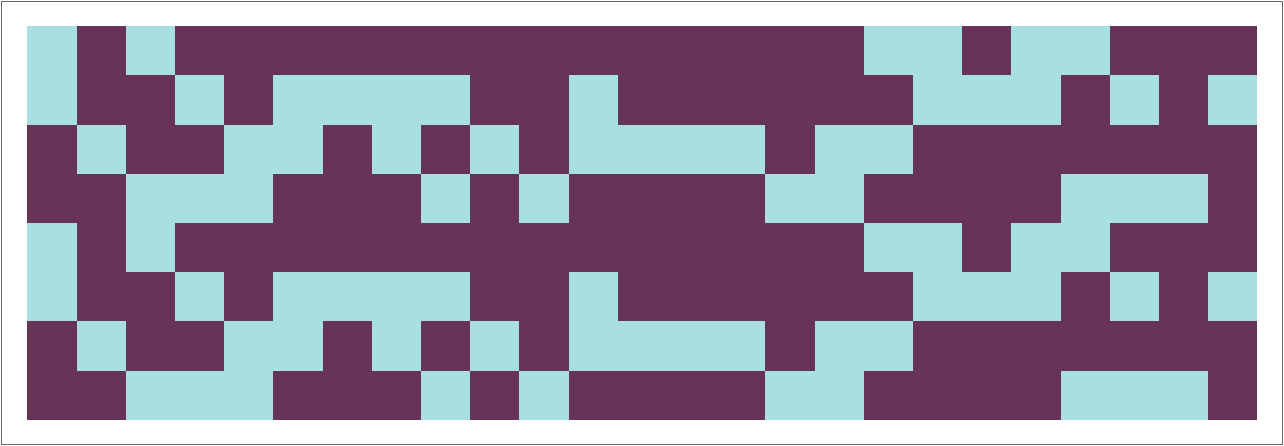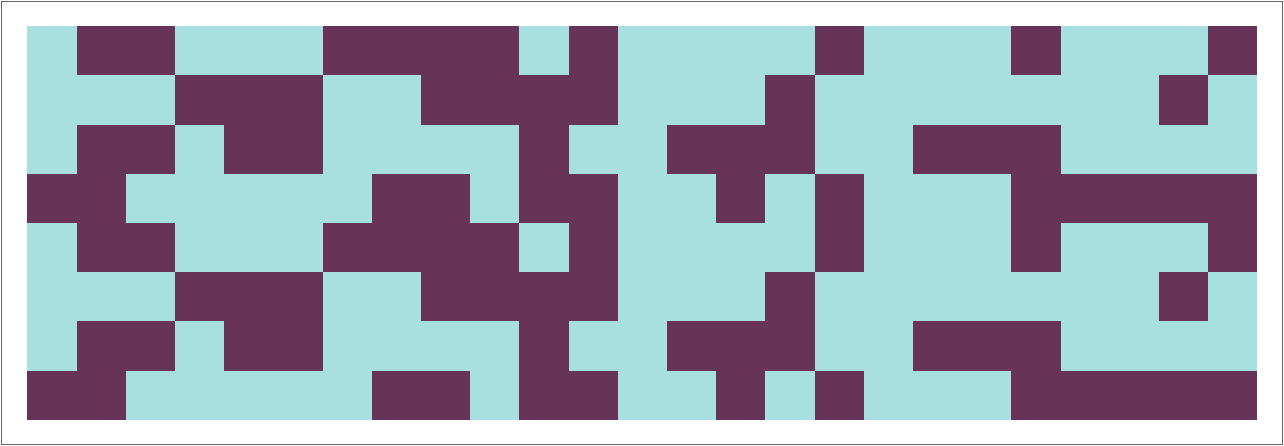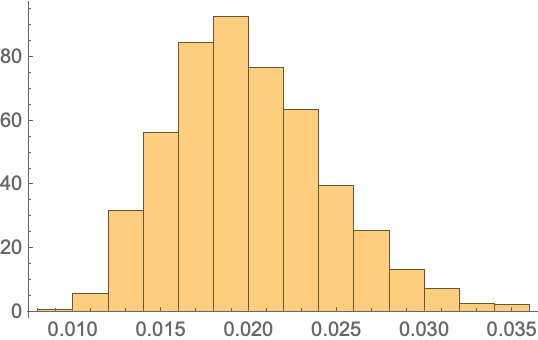Wolfram Function Repository
Instant-use add-on functions for the Wolfram Language
Function Repository Resource:
Use a discrete cosine transform–based method to test the randomness of a sequence of random reals
ResourceFunction["SpectralRandomnessTest"][sequence] conducts a discrete cosine transform-based test to asses the randomness of either a sequence of 0s and 1s or reals between 0 and 1, returning the associated p-value. | |
ResourceFunction["SpectralRandomnessTest"][sequence,"property"] conducts a discrete cosine transform-based test and returns the associated property. |
| "TestStatistic" | returns the test statistic |
| "PValue" | returns the p-value associated with the test |
Generate a sequence of random integers:
| In[1]:= |
Visualize the sequence:
| In[2]:= |
| Out[2]= |  |
Apply a discrete cosine transform-based test:
| In[3]:= |
| Out[3]= |
| In[4]:= |
| Out[4]= |
Generate a sequence of random integers:
| In[5]:= |
Visualize the sequence:
| In[6]:= |
| Out[6]= |  |
Apply a discrete cosine transform-based test:
| In[7]:= |
| Out[7]= |
| In[8]:= |
| Out[8]= |
Generate a sequence of random integers:
| In[9]:= |
| In[10]:= |
Visualize the sequence:
| In[11]:= |
| Out[11]= |  |
Attempt to reject a non-random sequence:
| In[12]:= |
| Out[12]= |
| In[13]:= |
| Out[13]= |
Test to see if rule 30 is random according to the spectral test:
| In[14]:= |
| In[15]:= |
| Out[15]= |  |
| In[16]:= |
| Out[16]= |
For non-random data, the Kolmogorov–Smirnov test, a part of the entire test, may return ties. Observing such ties is a strong indicator that the data is non-random:
| In[17]:= |
| In[18]:= |
| In[19]:= |
| Out[19]= |  |
| In[20]:= |
| Out[20]= |
| In[21]:= |
| Out[21]= |
Visualize the sampling distribution of the test statistic:
| In[22]:= |
| In[23]:= |
| Out[23]= |  |
This work is licensed under a Creative Commons Attribution 4.0 International License